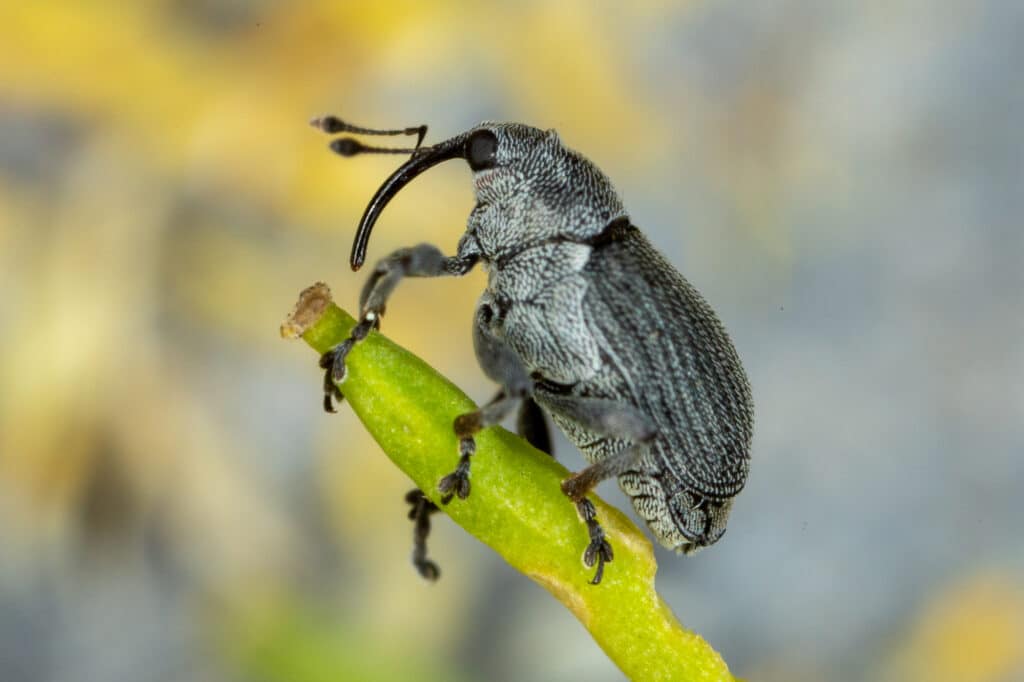Key Result
Parasitoid wasp T. perfectus demonstrated high levels of parasitism of cabbage seedpod weevil in Ontario and Quebec with minimum spill over into non-cultivated habitats. The insect did not appear to pose a major risk in the Prairies, suggesting it could work as a biological control option in Western Canada.
Project Summary
Overview
Cabbage seedpod weevil (CSPW) is a serious pest of canola and related brassicaceous crops in North America and Europe. Since being found in southern Alberta, the weevil continues to spread north and east into the canola growing regions of Western Canada (including Manitoba), with no practical alternatives to insecticides.
However, a parasitoid wasp, Trichomalus perfectus, which parasitizes CSPW in Europe and exists in Eastern Canada, has potential to provide a biological control solution. Where it occurs at high populations in Quebec, the parasitoid wasp appears to be managing CSPW to levels that no longer require insecticide spraying.
Since non-target weevils could also act as hosts for this parasitoid, this comprehensive environmental and economic study was required before potential relocation into Western Canada.
The purpose of this project was to assess the efficacy of Trichomalus perfectus in managing seedpod weevil in Quebec and its non-target effects in Eastern Canada, as well as to document the species of weevils and parasitoids in cultivated and uncultivated habitats that could be affected directly or indirectly in the Prairies.
Surveys of the pest in Quebec showed that the parasitoid is keeping the weevil at low numbers so extensive surveys and ecological studies in Western Canada were conducted. Key outcomes pointing to one overall conclusion were generated through this collaborative project.
Results
The field assessment of the environmental impact of T. perfectus on non-target weevils in Quebec determined that T. perfectus is the dominant parasitoid in canola attacking CSPW and that it does not “spill” in a major way onto non-cultivated habitats.
Data (2018-22) from monitoring the spread of T. perfectus in southwestern Ontario showed that T. perfectus has become the dominant parasitoid of another weevil (C. obstrictus) in southwestern Ontario in canola, having displaced but not eradicated several native parasitoid species that previously used CSPW as a host.
Results from surveys of canola and other Brassicaceae plants in Ontario (2018-22) monitoring non-target effects of T. perfectus confirmed that the parasitoid established in the Ottawa area and is using the native C. neglectus seed-feeding weevil as hosts.
The identification and initial risk assessment of potential non-target weevils and parasitoids in the Prairies concluded that the only native weevil species identified in the Prairies is C. neglectus, which is abundant in the west and has been considered a potential pest of canola. Also, based on the study in Quebec and Ontario, this species is rarely attacked by the parasitoid T. perfectus.
CLIMEX models are being updated for CSPW and will be developed and validated for canola. Once these models are published, they can be used to create CSPW parasitoids models to help predict the impact of climate change on this community.
Evaluating the landscape influence on the CSPW infestation and abundance and the parasitism of T. perfectus in Quebec showed key habitat features that can facilitate establishment of the parasitoid (such as landscape diversity, crop edge density, hay/pastures and soybean crops). Preliminary analysis from a similar study conducted in southern Alberta suggested that landscape features may not have a major influence on the distribution of the CSPW or the parasitoids in the region.
Therefore, it appears that T. perfectus does not pose a major risk to the diversity of weevils in Western Canada and is unlikely to have major negative effects on native parasitoids. Plus, optimal landscape composition learnings can be used to enhance the success of this biological control option.






